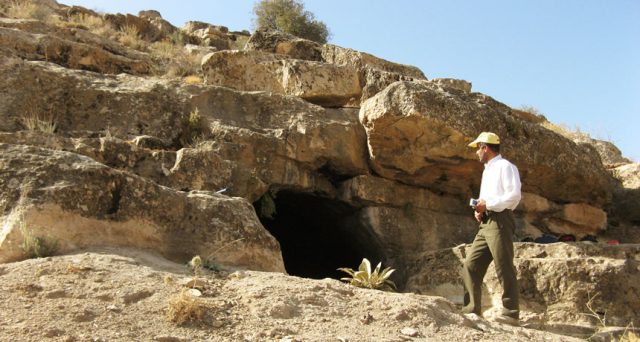
The greatest technological revolution in human history arguably happened about 12,000 years ago, when humans first stopped living as hunter gatherers and became farmers. This so-called Neolithic Revolution transformed human culture, our genomes, and our ecosystems. But the origins of farming have remained a mystery. Was there one eureka moment, when an early Neolithic person realized the seeds they scattered in fall had sprouted into grains two seasons later? Or, more intriguingly, did several groups of people start farming independently?
Two new studies published this month in Science and Nature magazines use DNA analysis of ancient human bones to conclude that farming arose in multiple regions simultaneously. The Science study focused on four farmers who lived between 9,000 and 10,000 years ago in the mountainous Zagros region of Iran. The Nature study analyzed 44 individuals (farmers as well as hunter-gatherers) from Armenia, Turkey, Israel, Jordan, and Iran who lived between 14,000 and 3,500 years ago. By sequencing parts of these ancient people's DNA, researchers could determine their likely ancestry as well as what populations are descended from them today. The researchers conclude that there are at least two groups of ancient humans who discovered farming separately in the Middle East and then exported the Neolithic revolution across large parts of the continent.
The secrets of ancient DNA
Over the past decade, modern DNA sequencing techniques have allowed scientists to recover strands of genetic material from decayed bones that have been infused with microbes over thousands of years. Now, those techniques are widely accessible and highly refined. It starts with how researchers pick their bones. If possible, they'll extract DNA from the petrous bone in the inner ear, a goldmine for genetic material that can yield roughly 100 times more ancient DNA than other parts of the skeleton. Then researchers use a process called in-solution hybridization, which uses special probes made from DNA or RNA that attach to the desired ancient human DNA, fishing it out of a soup of other genetic material from other organisms that accumulated in the decomposing bone. Techniques like these are making it easier than ever for us to sequence ancient DNA and reconstruct the human past.

The offspring of the two farming groups spread in different directions, too. The western Fertile Crescent farmers' progeny can be found throughout the Middle East and Europe. Meanwhile, the Iranian farmers from Zagros spread north to the steppes and south to India and Pakistan. Some also stayed put. There are strong genetic ties between the ancient Zagros farmers and a group of Zoroastrians living in Iran today. What's clear is that most people in both groups of early farmers were part of great migrations and mixed with many other peoples along the way.
These ancient farmers also seem to share a common ancestral group known as Basal Eurasians, an ancient lineage that split off from other Eurasian groups roughly 40,000 to 50,000 years ago. Unlike other early human groups in Eurasia, the Basal Eurasians didn't mate very often with Neanderthals—very little Neanderthal DNA made it into their population. But the Basal Eurasians seem to have mated with everyone else. We find traces of Basal Eurasian DNA in people across the continent. Still, we have yet to find the skeleton from an individual whose DNA is distinctly Basal Eurasian. For that reason, Basal Eurasians are called a "ghost population." We can only see their genetic legacy in modern populations and have to guess at where they came from and how they reached so many parts of Eurasia.
Why did farming arise simultaneously in different places?
That farming arose in separate populations seems to suggest a kind of inevitability to the discovery of agriculture. One popular hypothesis is that when humans reach a certain population size, they're destined to start innovating more. Raising crops would be one such innovation, especially in a hospitable region. This would help explain why ancient people living in South America and East Asia developed farming thousands of years ago, independent of the early farmers from the Fertile Crescent.
The idea that population size leads to cultural change grows out of the notion that people strive to imitate the most talented among them at any given task. The more people there are in a group, the more likely that there will be outliers who are exceptionally talented, inspiring social progress. While some population biologists embrace this idea, others in the field believe it's too deterministic because social change is stochastic. After all, farming did not emerge in all large groups at the same time.
Researchers will continue to debate what exactly inspired disparate groups to start farming and raising domestic animals, but at least one mystery is solved. We now know that at least two groups of farmers emerged on opposite ends of the Fertile Crescent roughly 12,000 years ago. Their progeny then spread across Eurasia, bringing Neolithic farming techniques as far as Western Europe and South Asia. Are we seeing a snapshot of the emergence of agriculture or just one snapshot of many instances where groups independently stumbled upon the idea of settling down? Now that we are living in an era when it's easier and easier to sequence ancient genomes, we may soon know the answers.
reader comments
53